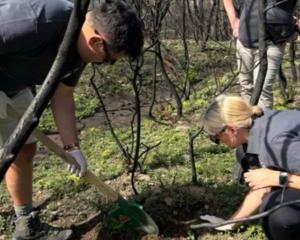A major report on adolescent health urges early moves to help at-risk children and to counter "an unacceptably high level" of poor outcomes among teenagers, including pregnancy, crime and mental health problems.
The report was released yesterday by Prof Sir Peter Gluckman, chief science adviser to the Prime Minister, and was prepared by a 21-strong task force co-chaired by Prof Gluckman and University of Otago research and enterprise deputy vice-chancellor and psychologist Prof Harlene Hayne.
The 318-page report, including 22 chapters on specific issues, and devoted to "Improving the Transition for Adolescents", reflects strong Otago University influence, with seven other current or former Otago academics among task force members.
The report was requested by Prime Minister John Key in 2009, and after concern that New Zealand adolescents had a higher rate of social morbidity than in many other developed countries.
Mr Key said yesterday the report highlighted real issues that had to be faced but were "not easy problems to solve".
"I've asked officials to work with Sir Peter and come up with a series of recommendations ... it will take some time. It's not a quick fix and it's going to cost money."
New Zealand had an internationally high rate of teenage suicide, and its teens took too many risks in things such as smoking, drunkenness and pregnancy, he said.
The report noted that at least 20% of young New Zealanders were exhibiting behaviours and emotions or having experiences that led to long-term consequences, affecting the rest of their lives.
"New Zealand has a woefully deficient number of mental health services that are aimed specifically at young people," the report said.
It was economically sensible to increase the mental health work force in New Zealand, "particularly those who are specifically trained to work with children and adolescents", and better screening to detect those with mental health issues was recommended.
It was also recommended the purchase price of alcohol be increased and its marketing and availability be reduced to limit excessive consumption.
Prof Richie Poulton, director of Otago University's Dunedin Multidisciplinary Health and Development Research Unit, noted in the report that recent research had prompted policymakers to reassess the value of investing in educational programmes aimed at "developing children's self control as a means of improving population health and productivity, and reducing crime".
Recent work from the Dunedin study, involving various levels of self-control among 1000 children, showed it "predicted an impressive array of life outcomes", including those of physical and financial health and criminal offending, up to three decades later.
Investing in related educational programmes, including in early childhood, would be positive, he said in an interview.
Prof Gordon Harold, the former director of the Otago University Centre for Research on Children and Families, highlighted the importance of early identification of at-risk children in a report chapter.
Prof Harold, who recently took up a senior post at the University of Leicester, said in an interview early identification and intervention reduced the likelihood that "individual children will experience harsh psychological and/or physical injuries as a consequence of living in risky family settings" such as involving high levels of inter-parental conflict.
This would also make it less likely that "harsh, damaging behaviours will be transferred from one generation to the next", he said.
Other University of Otago task force members: Dr Tamar Murachver, psychology; Dr Keren Skegg, psychological medicine; Dr Sue Bagshaw, Christchurch, Christchurch Health and Development Study director Prof David Fergusson and Dr Joseph Boden.
The concerns
• Concerns highlighted in the report include.
As a result of physical maltreatment from 1998-2002, 590 children were hospitalised after an assault; of those children, 46 later died.
• Among OECD countries, New Zealand has one of the highest rates of child death from maltreatment, with 1.2 child deaths per 100,000 children annually; 4-6 times worse than the leading industrial countries' average.
• New Zealand children in their first year of life have the highest rates of all age groups for death from assault; Maori children face twice the statistical risk of death by assault as non-Maori children
Key recommendations
• A primary prevention or "life course" approach be taken to reduce the morbidity linked with adolescence.
• Targeted investment in evidence-based education, prevention and treatment programmes directed towards at-risk children and their families is cost-effective.
• Targeted investment needed to address educational underachievement.
• Additional capacity needed in mental health workforce, particularly those trained to work with children and adolescents, to provide effective screening and treatment for the substantial group of young people whose transition to adulthood is marred by mental health problems.
• Strategic national approach to reducing depression in adolescence.
• Measures to increase purchase price of alcohol, restrict its marketing and availability; more tightly regulated drink-driving.
• Develop policies and practices to address issues resulting in Maori and Pasifika young people being at greater risk of morbidity.
- Additional reporting by NZPA












